The red oak tree is a beautiful deciduous broadleaf with attractive red or brown leaves and beautiful branch patterns. It is aesthetically pleasing as it adds a romantic vibe to your yard. However, your red oak tree is not showing signs of leafing out, so what could be happening? Here's what we found.
The red oak tree may not leaf out due to the following reasons:
- Moisture issue ( VECTOR ICONS )
- Climate and weather conditions
- spacing in the surroundings
- Distress
To find out more about the causes of why your red oak tree is not leafing out and other possible diseases it may have, continue reading through this article, and we will discuss the details further.
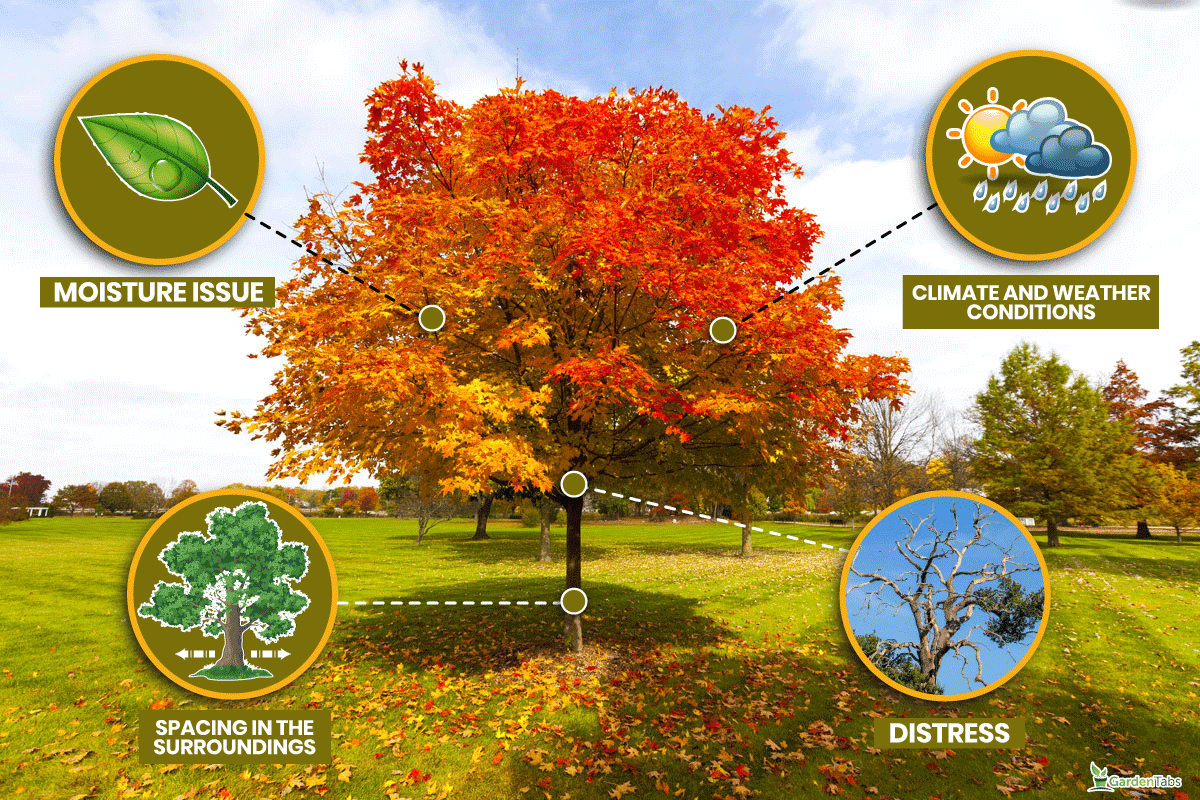
Why Is Your Red Oak Not Leafing Out?
There are several factors that can cause your red oak tree to not produce leaves. These are some of the reasons:
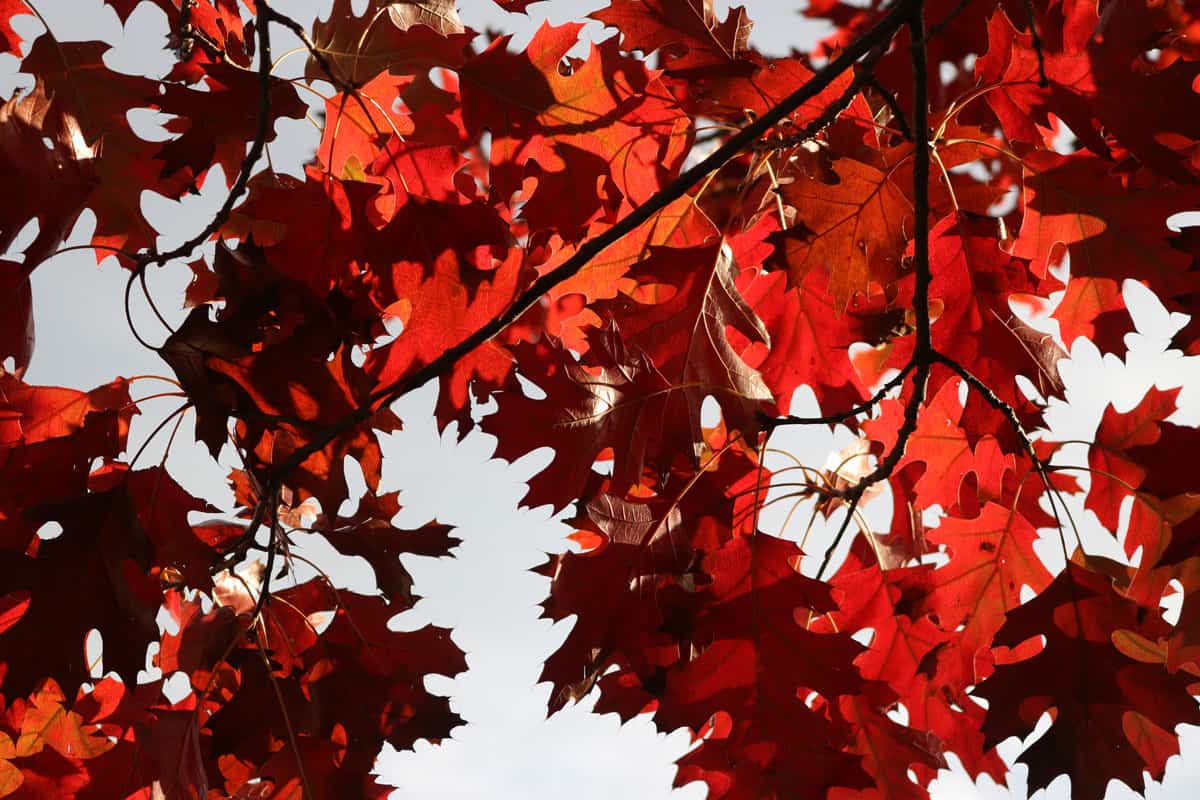
Moisture Issue
One of the reasons why red oak and other trees may not produce leaves and old leaves fall out is moisture issues.
Due to drought and lack of water, the root will have difficulty distributing moisture and other necessary nutrients to the entire tree. The brown patches will appear on the leaves, then they drop, and it won't produce new ones.
Oak Anthracnose or leaf blight is another cause of leaf drop and not leafing out. This fungal disease is active during cool and wet spring conditions.
Climate And Weather Conditions
The tree may not leaf out due to unpredictable weather conditions. Trees won't leaf out until late spring to early summer if they have no health issues.
Meanwhile, if you live in a drought area or there are storms and winds, the red oak tree will not leaf out even in springtime. There could be damage to the roots and the tree. Lightning strikes also cause harm and make the leaves fall out.
Spacing
Overcrowded landscapes can cause oak trees not to leaf out. Insufficient space prevents the tree from maturing and absorbing nutrients from the soil since other plants steal the nutrients from the red oak tree.
This issue can cause leaves to fall out and not produce new ones.
Distress
A distressed tree won't produce new leaves. When you cut the buds and see brown inside, it's a sign that it has been dead for a long time. If the bud is green outside but brown inside, the cause could be cold.
If the branches are still alive, but most of the buds are dead, that means the tree is suffering due to stress or rooting problem. This illness is common in deciduous trees such as maples and oak trees.
What Diseases Are Red Oak Trees Prone To?
These are the common diseases of a red oak tree:
Oak Wilt
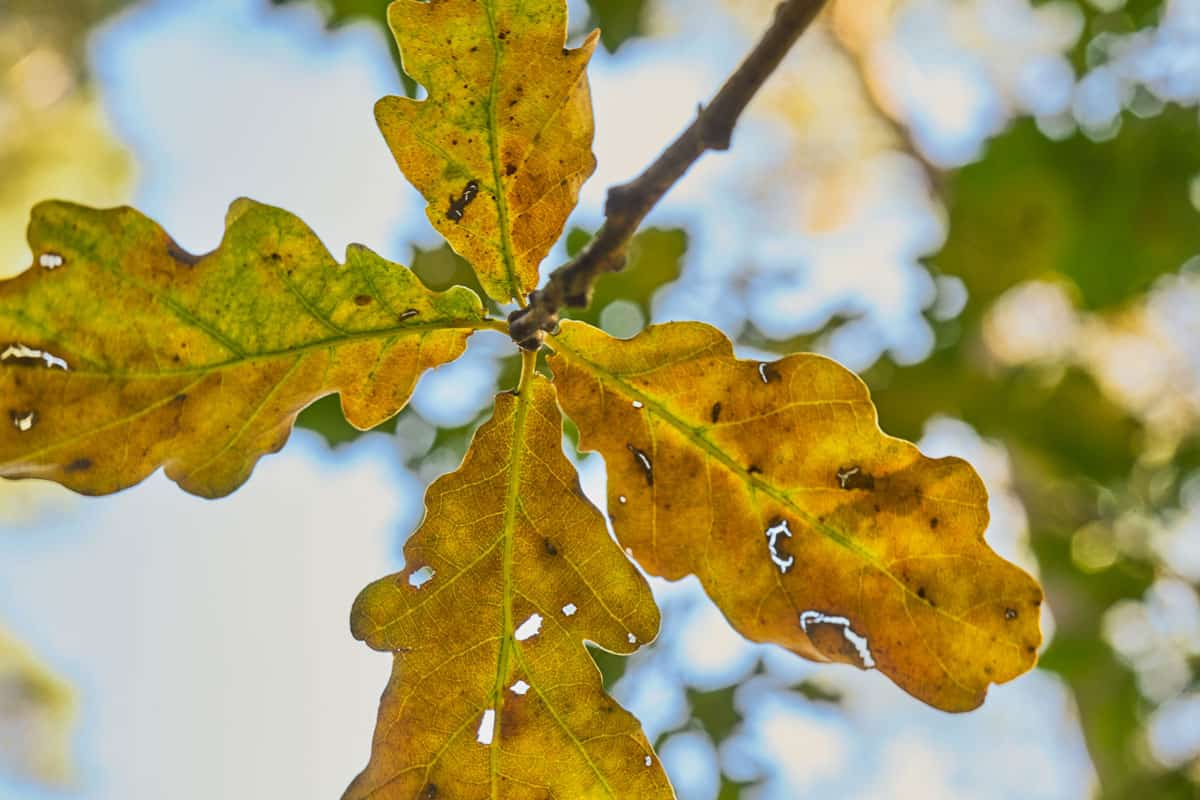
Oak wilt is a destructive, severe disease affecting red oak trees. This disease is caused by the fungus Ceratocystis fagacearum.
The disease thrives in the soil and spreads through water flow. Once the red oak is infected, the tree can die within four to six weeks.
Symptoms of oak wilt on a red oak tree include:
- Yellowing leaves or browning leaves on one side.
- Foliage turns off-green to bronze.
- Necrosis appears from the leaf margin towards the leaf's veins.
- Light blueish-gray streaks show under the outermost layer of the tree bark.
- Bark cracking at the tree branch base or around the roots.
How To Treat Oak Wilt
The way to fight oak wilt is through injections of fungicide into living oak trees before they develop symptoms, which can protect the tree for two years. You may contact the authorities for advice on the chemical used to control oak wilt.
Dead trees must be cut and disposed of properly. Avoid using the soil to plant a new tree. Oak wilt lives in soil and can still spread to other trees.
Gouty Oak Gall
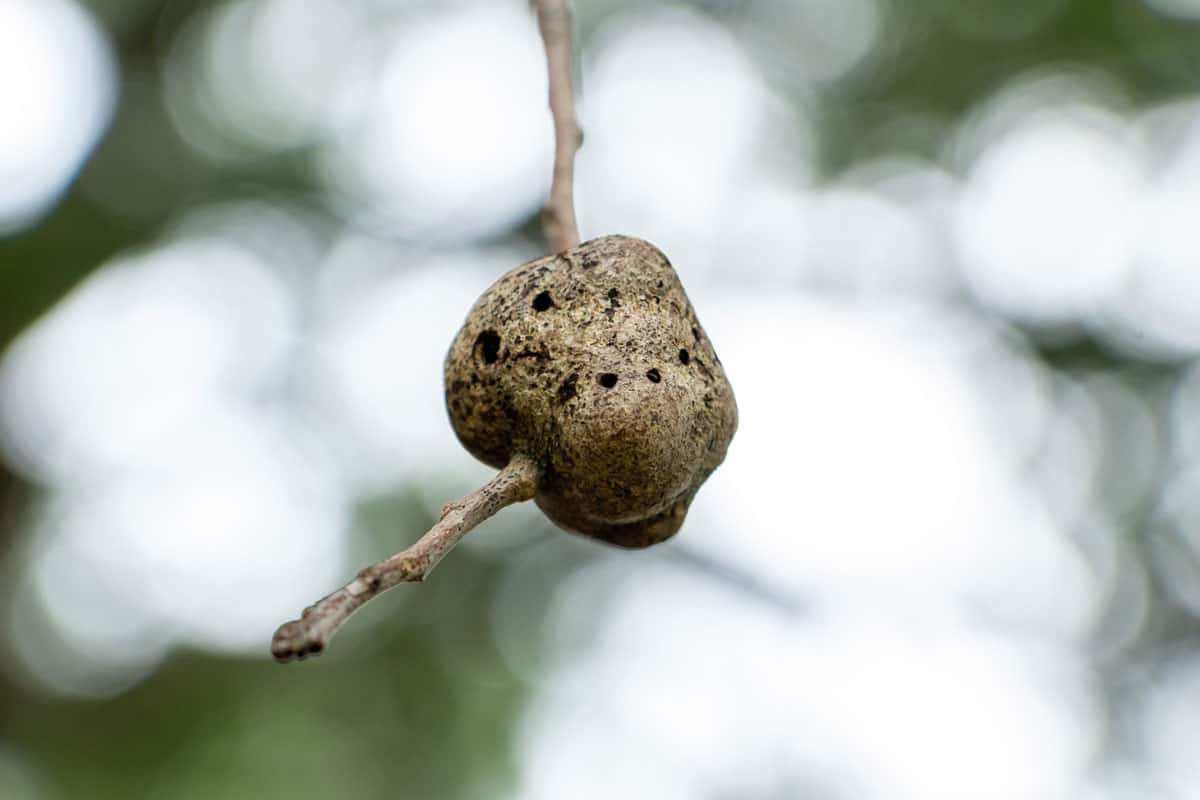
The gouty oak gall, or C. quercuspunctata, is abnormal plant swelling of plant tissues. This disease does not affect the host tree's health.
There could be a premature leaf drop due to an interrupted photosynthesis process. These gouty oak galls may also affect the beauty of the red oak tree, as most owners find them unattractive.
How To Treat Gouty Oak Gall
The dropped leaves may attract pests that could cause more damage to the trees. Clean the surroundings of the red oak tree and dispose of the dead leaves properly.
You may use registered insecticides on gall wasps, but gouty oak galls are almost impossible to stop developing.
Oak Anthracnose
Oak anthracnose or leaf blight is a disease caused by the fungus Apiognomonia errabunda. The patches of blighted leaf margins appear on veins of new foliage.
The leaves become papery, dry, and gray-colored. This damage can be minor or severe if prolonged.
The disease subsides in mid-summer and comes back in autumn, and wet spring conditions benefit the fungi. Matured leaves can withstand this disease better than new leaves.
Established trees can recover from anthracnose fungi as the growing season flourishes.
How To Control Anthracnose
- Remove dropped leaves and dispose to reduce fungal overwintering.
- Mulch the tree using organic mulch.
- Water properly. Overwatering in wet conditions or not watering enough in summer can harm the tree.
- Prune the red oak tree to provide good airflow.
- Use fungicide spray.
Scarlet Oak Sawfly
Scarlet oak sawfly infestations are unnoticeable until late summer. You will notice it when their feeding has caused defoliation and discoloration of leaves.
These sawflies could kill red and white oak trees by feeding off them and skeletonizing the leaves.
Signs of scarlet oak sawfly infestation include:
- Transparent leaves.
- Presence of larvae feeding off from leaves.
- Upper crown defoliation.
How To Control Scarlet Oak Sawfly
You can apply insecticides to control these sawflies and limit their population. Use insecticides with caution. Refer to the label's instructions for proper use.
Armillaria Root Rot
Armillaria root rot, also known as crown rot, is an oak root fungal disease. Healthy trees suddenly show weakness, will wilt, and die.
The symptoms are the same as other rooting problems, such as gophers, overwatering, phytophthora root rot, and more.
To determine if the symptoms are caused by crown rot, you can dig around the tree bark or the roots.
If you see a creamy-white plaque of mycelium with a pungent mushroom smell between the wood and the bark, this is a sign that the tree has Armillaria root rot disease. However, the mycelial plaque is difficult to detect during the early stage of infection.
This infection spreads through machinery or water flow. These are the tips to manage this disease:
- There is no direct approach to control Armillaria root rot. Soil fumigation may help in replanting new trees in infected areas.
- Remove the infected trees, roots, stumps, and other parts and dispose of them properly.
- Treat the soil with metam sodium. Fumigant treatments are toxic, so contact professional pest control to assist you.
Powdery Mildew
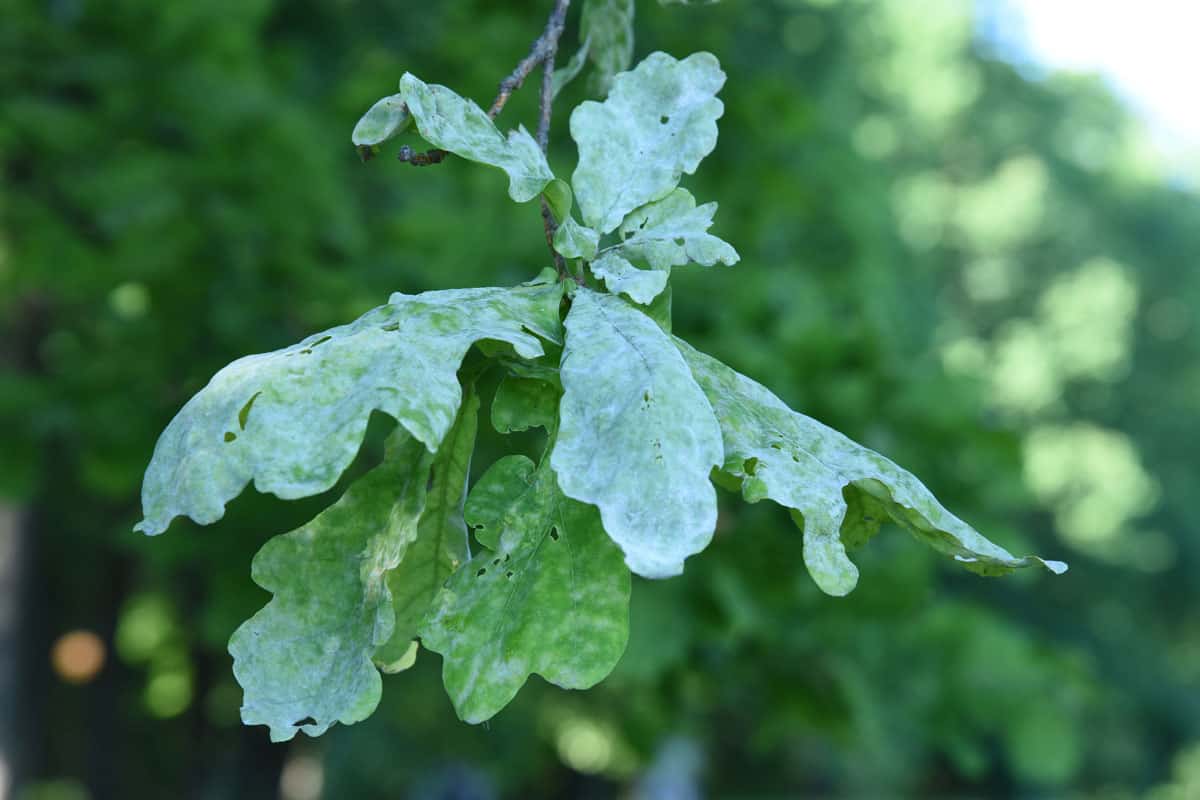
Powdery mildew caused by Microsphaera alphitoides or Erysiphe alphitoides is a known pathogen of oak trees. A faint, off-white development appears on the leaves. Powdery mildew on oak trees, however, is not fatal.
How To Control Powdery Mildew
- Reduce or stop watering infected trees in summer because this mildew will continue to grow.
- Spray fungicides during dormant seasons from December to January to control leaf infections.
- Trim the inner branches.
- Limit applying fertilizer.
How To Maintain Red Oak Tree

Proper maintenance is needed to prevent leafing problems, root rot, and other diseases.
- Place the oak tree in a spot with plenty of sunlight. Oak trees love the full sun. This tree requires 4 to 6 hours under the sun but can also live in partial sun.
- The red oak tree prefers sandy and well-drained soil and is acidic.
- Water the oak about 10 gallons per inch of the trunk diameter in its first few years.
- The red oak tree doesn't need fertilizer. In some cases, you may need to supply nutrients to prevent deficiencies. You may test the soil using a tester to know the nutrient deficiency. Fertilize the tree with slow-release and proper NPK formula in early spring.
- This tree is winter-hardy and can grow from zones 4 to 8.
- Prune the tree if it is three years old and below.
Summary
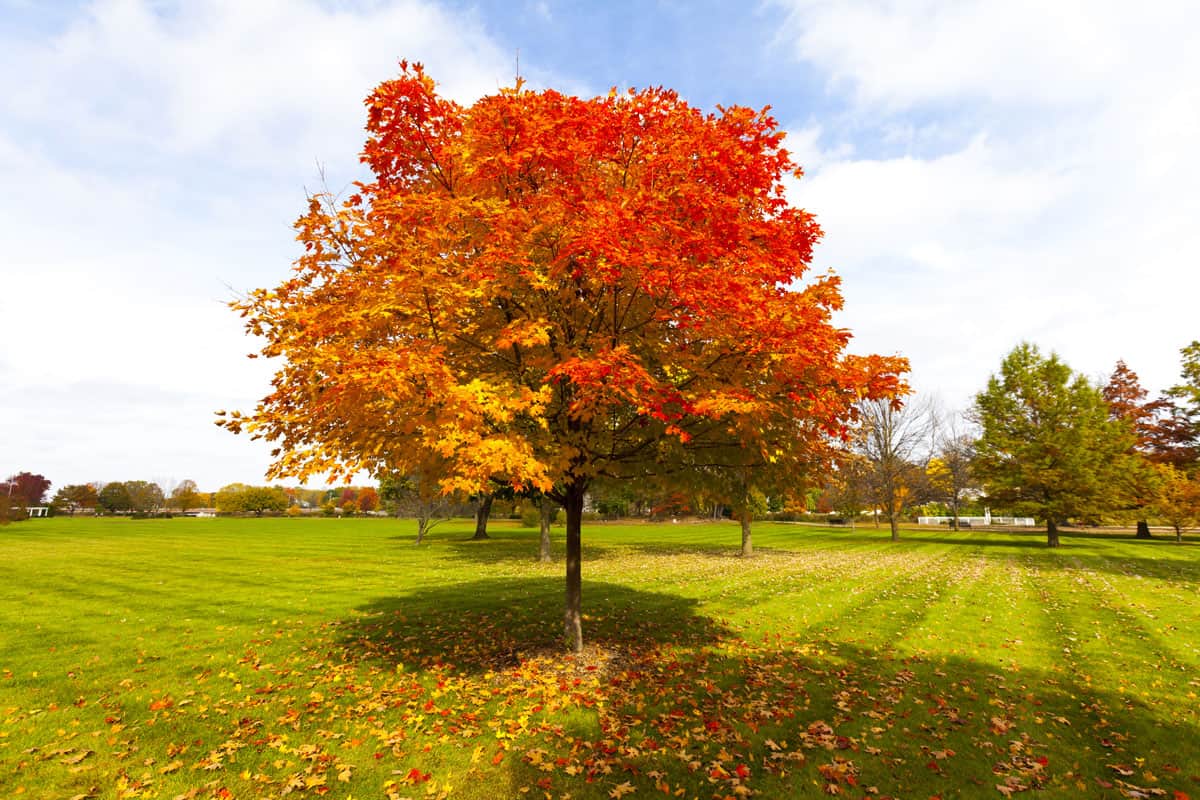
Knowing the causes of why the red oak tree is not leafing out will help you determine how to prevent such in the future and help you take care of your other oak trees. Providing the tree with proper maintenance will support it in growing healthy.
For more helpful tips in gardening, you may read these posts:
Will Rhododendrons Grow Under Oak Trees?
How Far From House Should Oak Tree Be Planted
